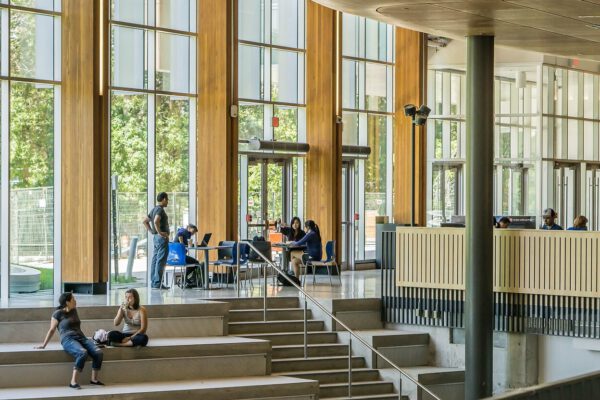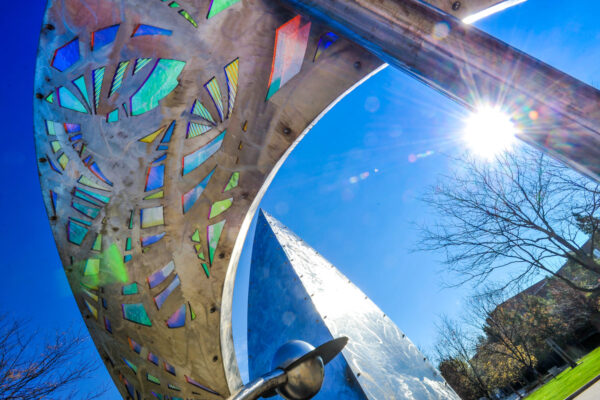By Andrew Shean
This post is the third in a series from the Association of Chief Academic Officers.
Higher education is in a state of major change. Innovation experts Clayton Christensen and Michael B. Horn predict that a considerable number of institutions will merge or close over the next 15 years. While their claim is probably overly dramatic, we’ve all seen the headlines about mounting student debt, unemployed graduates moving back in with parents, ever-increasing tuition, layoffs at colleges, and dramatically reduced government support for public institutions.
While there are many challenges, there are also mavericks in higher education innovating in a classic American way, including senior academic leaders who are embracing changes in the education ecosystem to improve student outcomes, access, and affordability. But the media doesn’t cover colleges and universities like Silicon Valley or even K–12 education, which in part accounts for the fact that there’s not enough positive attention paid to innovation in our postsecondary education system.
Higher education has gone through enormous changes in the last two decades, much of it led by online institutions designing programs to suit the needs of post-traditional students juggling multiple roles including parents, employees, and military personnel. While digital platforms were established at many traditional universities by 2005, most weren’t leveraged to their full potential. The online sector of education figured out that they could earn the business of millions of students who couldn’t travel to campus three days a week to complete a degree. Fast forward to today: more than 200 institutions have senior positions with words like “innovation” or “digital” in their title, according to a 2018 report from Entangled Solutions.
Massive open online courses (MOOCs) received a lot of media coverage over the past decade as they enroll millions of students from around the world in free courses from elite universities. But their course completion rates are extraordinarily low, limiting impact. They largely mimic the “sage on stage” model of traditional higher education: watch a lecture, do some work. Coursera claims “the world’s best learning experience,” which should be insulting to the thousands of professors who haven’t been invited to the party.
I come across fascinating innovators in higher education all the time. I created a short list of five change agents, determined not through any scientific metric, but rather discovered through readings, travels, and meeting original thinkers and institutions that are creating new paths for parents and students. In no particular order:
Southern New Hampshire University—College for America
Under the leadership of President Paul J. LeBlanc, the nonprofit Southern New Hampshire University (SNHU) has grown from a sleepy regional player into an online education powerhouse that continues to grow at astronomical rates. SNHU is also a groundbreaker in competency-based education. Instead of receiving credit hours for completing semester-long courses toward earning a degree, students in SNHU’s College for America are measured by demonstrating their mastery of a subject by completing tasks—as quickly as they can. The yearly tuition is just $2,500, and College for America is the very first competency-based program approved by the U.S. Department of Education for federal financial aid.
High Point University
North Carolina’s High Point University (HPU) is focusing its business model on innovation to attract students in a highly competitive market. This traditional college has invested over $700 million since 2006 to overhaul its facilities. The campus is immaculate, every walkway red brick and lined by flowers, not asphalt with grass corners cut into dirt paths.
HPU’s president (and an alumnus), Nido Qubein, created an all-in tuition model (currently about $31,000) to appeal to affluent parents who want their kids taken care of, soup to nuts. Moreover, HPU’s upbeat culture has attracted fantastic academic talent eager to improve higher education. High Point has moved up dramatically in the various ratings systems (ranked highly among regional colleges in the South by U.S. News & World Report) and is growing its enrollment. Unlike many in the space, HPU has a clear institutional voice and truly differentiates itself in the eyes of parents and students.
Georgia Institute of Technology
Partnering with Udacity (a for-profit MOOC provider) and AT&T, Georgia Institute of Technology (Georgia Tech) launched a $6,600 online master’s degree in computer science in spring 2014. That is a significant savings over the traditional program, which costs nonresidents more than $40,000.
It’s audacious and, while it may not scale to other academic disciplines, the deep partnership among a prestigious university, a major corporation, and a tech company is thought provoking. This is not just a company endowing a professorship and paying to renovate a lecture hall. AT&T invested $2 million to build out the program, hoping to encourage more students to study science, technology, engineering, and math.
StraighterLine
Looking for a bargain? Not technically a university or a college, StraighterLine is a company that delivers many required college courses for a $99 per month membership and course fees starting at $49 each. The company preapproves students to transfer credits into over 50 institutions, including the University of Maryland and Newbury College. StraighterLine provides first- and second-year courses, all online.
For $1,000 students can complete much of the general education curriculum required by four-year programs. “Our prices are low,” founder and CEO Burke Smith has said, “because we don’t try to subsidize the rest of a college experience with general education, and we don’t burden our courses with the overhead of a campus.”
Hack Reactor
What if the future of higher education rests outside of traditional, accredited institutions? How many parents might be excited at the thought of paying only $18,000 in tuition to guarantee their student (with 98 percent confidence) an average starting salary of $110k? Does it matter that the curriculum is only 12 weeks long?
Hack Reactor describes itself as the Computer Science degree for the 21st Century and is one of many coding academy startups created over the last five years. They don’t offer loans or credits you can transfer anywhere else. And they do more than just teach you to code. They’ve also been targeted by California’s Bureau for Private Postsecondary Education (BPPE) because they haven’t registered or validated their curriculum with the agency. Hack Reactor CEO and co-founder Anthony Phillips diplomatically countered the BPPE’s demands in an interview with Venture Beat a while back, saying that “what that looks like and what makes sense for our schools is not necessarily going to fit in the current regulation.” These schools are trying to teach rapidly-changing technologies in demand by companies like Google and Facebook and can’t wait six months for a bureaucrat to approve a change to course content or provide necessary oversight to make sure students aren’t taken advantage of.
Are there any universal lessons from these examples? Will hundreds of traditional institutions evaporate over the next 10 years? What role does innovation play at your campus? Does some of what you read here cause a negative reaction? Innovation and change are not always warm and fuzzy endeavors.
Higher education is one of the oldest institutions in the world. Many institutions are resilient and baked into the fabric of their communities. They’ll change, and perhaps shrink, as the number of traditional college-age students slowly decreases and competition from online programs increases. But there is opportunity to grow and prosper, at least for institutions that understand who they are and that are capable of communicating that difference to prospective students.
Realizing that innovation and experimentation is happening inside traditional institutions should be motivating for academic leaders everywhere. These same leaders should consider new players outside of traditional, government-supported higher education as potential disruptors. Forty years ago, Toyota sold mopeds, Oldsmobile was a well-known brand, and there were only three TV networks. At the very least, broader awareness of these experiments should be familiar to parents, students, faculty, and academic leadership with the ultimate goal of sustained improvement in educational outcomes and value.
ACAO aims to enhance the effectiveness of CAOs by providing networking and professional development opportunities and engaging members in academic affairs issues that cut across the diversity of higher education institutions and missions.
aims to enhance the effectiveness of CAOs by providing networking and professional development opportunities and engaging members in academic affairs issues that cut across the diversity of higher education institutions and missions.
If you have any questions or comments about this blog post, please contact us.


